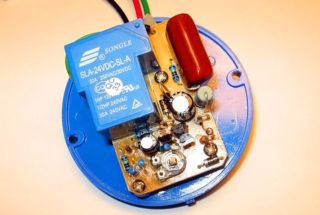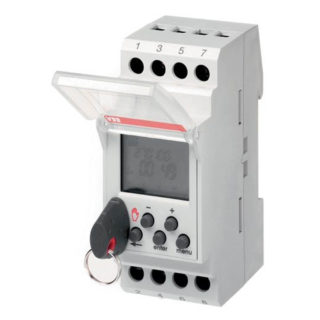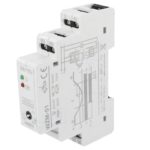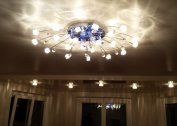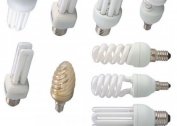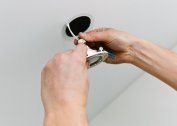Automation of street lighting control reduces energy costs, simplifies maintenance of the local area. The light sensor gives a signal to turn on and off the lamps, lights, searchlights. An electronic device is bought, taking into account the technical parameters of the load. Craftsmen make the device themselves.
Advantages and disadvantages of the light sensor
The light sensor is called a photocell or twilight switch. It monitors the brightness of lighting on the street or indoors, if necessary, turns on and off the lamps. Using a street light sensor has several advantages:
- automation of the inclusion of street lighting;
- accuracy of operation, which allows to reduce the operating time of lighting devices and the cost of electricity;
- programmable devices are set according to individual settings;
- scare thieves - the system works by simulating the presence of home owners.
Disadvantages:
- low protection class of the device provokes rapid oxidation of contacts and breakage;
- for proper operation, the housing periodically requires cleaning.
In places where constant lighting is not required, the twilight switch is supplemented with a motion sensor. Lamps light up only when a person approaches. The system increases energy savings.
The device and principle of operation of the photo relay
Light sensors to turn on street lights work without human intervention. They are used on the house sections of cottages, roads, construction sites. The photo relay is controlled by a photosensitive photocell. This device recognizes the degree of natural or artificial lighting and sends signals to the electronic unit.
In the dark, the intensity of the light flux decreases, the parameters of the photo relay change, it closes the contacts. Current flows to the lamp. In the morning, the contacts open, the backlight turns off.
Component parts of the device:
- photocell - a photoresistor or phototransistor that changes its own electrical conductivity depending on the brightness of the light flux;
- control board - amplifier, electromechanical relay;
- case - the location of all elements, performs a protective and mounting function.
Twilight switches are powered by the mains. Their terminals are phase-neutral switched.
Varieties of light sensors
The classification of sensors occurs in several ways.
By design model are:
- The photocell is located in one housing with the rest of the details. The twilight relay is installed next to the lighting fixture.
- Device with external (external) photocell. The main unit is mounted on a DIN rail, a photosensitive sensor on the street.
By type of management:
- Devices with a timer - the device adjusts to the light level and sets the time period of work. For example, lights turn off when night falls.
- Photo relay with forced shutdown - if necessary, activated and deactivated manually.
- Programmable twilight relays are technologically sophisticated devices that work according to specified settings.
By type of load:
- LED;
- luminescent (energy-saving);
- incandescent lamps.
Multifunctional equipment with a timer and a motion sensor is more expensive, but more efficiently controls lighting.
Device Specifications
The scope of use of electronic devices is determined by their technical characteristics:
- Operating voltage - connection of the light sensor is possible to a standard network of 220 V or to a source of constant voltage of 12 V.
- Degree of protection - the device for external placement needs isolation from moisture and dust. Protection class is marked with IP mark. It must be at least IP44.
- Maximum current - the parameter shows the permissible current strength.
- Operation mode settings - selects the sensitivity of the sensor, the delay time for turning it on and off.
- Temperature range - the manufacturer indicates at what temperature the photo relay can be operated. Usually it is quite wide, but it is worth clarifying the limit of negative indicators.
- Dimensions - the dimensions of the device are taken into account when choosing a placement.
Experts advise choosing a twilight relay with a margin of 20% load power.
Overview of popular models and selection criteria
Among street lighting sensors, Russian and Chinese manufacturers are in demand. Popular models:
- Photorelay FR-601 from IEK (China) - a device with a built-in photocell. Plastic housing, degree of protection IP44. It works with a voltage of 220 V, a maximum current of 10 A, a load of 2.2 kW. Response threshold 5-50 Lux. Operating temperature -25 + 45 °.
- Photorelay FR-7N (Russia) - the equipment has a remote sensor and a cable 1.5 m long. It is mounted on a DIN rail. Rated voltage 220 V, current 5 A. Illumination range 10-50 Lx, response time 15 s.
- Twilight relay Zamel WZM-01 / S1 (Poland) - the device is mounted on a DIN rail. It is designed for voltage of 230 V, load of 4 kW, current 16 A. Protection class IP20.
- PS-3 EKF (Russia) - the product is designed for a rated voltage of 240 V, current 20 A, load 4.4 kW. Twilight threshold 5-50 Lux. Degree of protection IP44.
- FR-601 from IEK
- PS-3 EKF
- Zamel WZM-01S1
- FR-7N
To select a light sensor, study the technical parameters of the device. You will also need to calculate the load power and determine the installation location. These factors affect the type of twilight switch. The main selection criteria include:
- technical specifications;
- the ability to make individual settings of the response limit;
- the presence of additional sensors;
- location of the photo relay.
Price is one of the decisive factors when buying. Additional functions make the device more expensive. If some of the devices are not required, do not take an expensive model.
Common sensor wiring diagrams
The photo relay connection scheme depends on the number of pins. Switching takes place in a junction box. Device wires vary in color:
- brown or black - connects to the phase, provides power;
- blue - goes to the zero terminal, the lamp wire is directly connected to it;
- red - the output wire feeds the phase to the light fixture.
If the motion sensor enters the circuit, it is connected in series, behind the twilight relay. The switch controlling several lamps is switched with the starter. For independent connection of the device, the manufacturer gives the circuit in the instructions.
Installation and connection of photo relay for street lighting
The installation method depends on the type of device selected. The easiest way is to install a photo relay with a wall mount with a built-in photocell. The upcoming workload is divided into 3 stages: site selection, installation and configuration.
Seat selection
In order for the twilight relay to turn on and off the lighting in time, it is important to choose the right place for its installation.Placement recommendations:
- Direct sunlight should fall on the device.
- The headlights of cars should be excluded to avoid false alarms.
- The device must be freely accessible for maintenance.
If the twilight switch is mounted on a DIN rail, a place is selected only for the remote sensor.
Installation work
To connect the photo relay, you can use the junction box of the lamp. It has already been fed. If necessary, a separate mounting box is installed. The edges of the colored wires are cleaned from insulation. They are connected to the terminals according to the manufacturer's scheme.
Outdoor models include a bracket. The device is fixed in place with screws.
Instrument Setup
After connecting the light sensor, its sensitivity is set. For this, in the lower part of the case there are regulators - disks or toggle switches. According to the designations “+” and “-”, choose in which direction to turn the wheel. The tuning elements set the threshold of illumination at which the twilight switch is activated. On some models, you can select the on-delay time.
Is it possible to make a photo relay with your own hands
Making the sensor with your own hands will not be difficult for radio amateurs. For an electronic device you will need:
- triac with built-in dinistra (quadrack) with operating parameters of 4 A and 600 V;
- photoresistor type FSK-7, FSK-G1;
- resistor with a resistance of 47 kOhm.
The circuit is powered from a standard 220 V network. The inclusion is configured by a resistor. Its resistance depends on the desired threshold for turning on the backlight. When using a quadrack, you can connect a load of up to 500 watts. Such a circuit consists of a small number of parts, does not require a separate power supply. Elements with a soldering iron are mounted on a printed circuit board.
The cost of twilight switches is available to most buyers. Models with a common body are offered at a price of about 400 rubles. Devices requiring mounting on a DIN rail will cost more - 1500-2500 rubles. You can install the photo relay according to the manufacturer's instructions.

